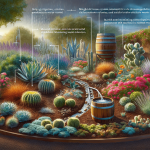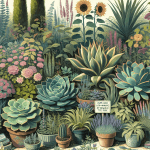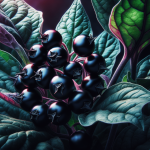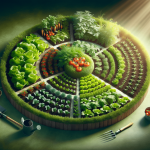This post may contain affiliate links. As an Amazon Associate, we may earn commissions from qualifying purchases.
Are you interested in organic gardening but unsure of where to start? In this article, we will explore the best practices for organic gardening. Whether you’re a seasoned gardener or a beginner, these tips and techniques will help you cultivate a thriving and sustainable garden. From soil preparation to pest control, we’ve got you covered. Get ready to grow your own organic paradise and reap the bountiful rewards of nature’s goodness. So grab your gardening tools and let’s get started!
Soil Preparation
When it comes to organic gardening, soil preparation is the key to success. And one of the best ways to prepare your soil is by using organic compost. Adding compost to your soil will enrich it with essential nutrients and improve its structure. This rich and fertile soil will provide a healthy environment for your plants to grow and thrive. Additionally, you should add organic matter regularly to maintain the soil’s fertility. This can include items such as leaf mold, grass clippings, and kitchen scraps. By regularly adding organic matter, you will nourish the soil and provide a continuous source of nutrients for your plants.
While preparing your soil, it is important to avoid the use of synthetic fertilizers. These chemicals can be harmful to the environment and can also impact the taste and quality of your produce. Instead, focus on using natural fertilizers, such as compost or organic plant-based fertilizers. These will not only provide your plants with the necessary nutrients but will also support the overall health of your soil.
Another important aspect of soil preparation is ensuring that it is well-drained. No plant likes to sit in waterlogged soil, as this can lead to root rot and other diseases. To prevent waterlogging, ensure that your garden beds have good drainage. You can achieve this by adding organic matter to improve the soil’s structure or by using raised garden beds. By keeping your soil well-drained, you create an optimal environment for your plants to grow.
Crop Rotation
Crop rotation is a practice that involves growing different crops in the same area over a specific period of time. This practice is essential in organic gardening as it helps to prevent the buildup of pests and diseases. By alternating plant families, you disrupt the life cycle of pests and diseases, reducing their impact on your crops. Additionally, crop rotation can help improve soil fertility. Different plants have different nutrient requirements, and by rotating crops, you prevent the depletion of specific nutrients in the soil. This allows for balanced nutrient uptake by different crops, leading to healthier and more productive plants.
When implementing crop rotation, it is important to plan your garden accordingly. Keep track of which plants belong to which families and create a rotation schedule that ensures you are not planting the same crop or related crops in the same area for consecutive seasons. By following a well-thought-out crop rotation plan, you can maximize your garden’s health and productivity.
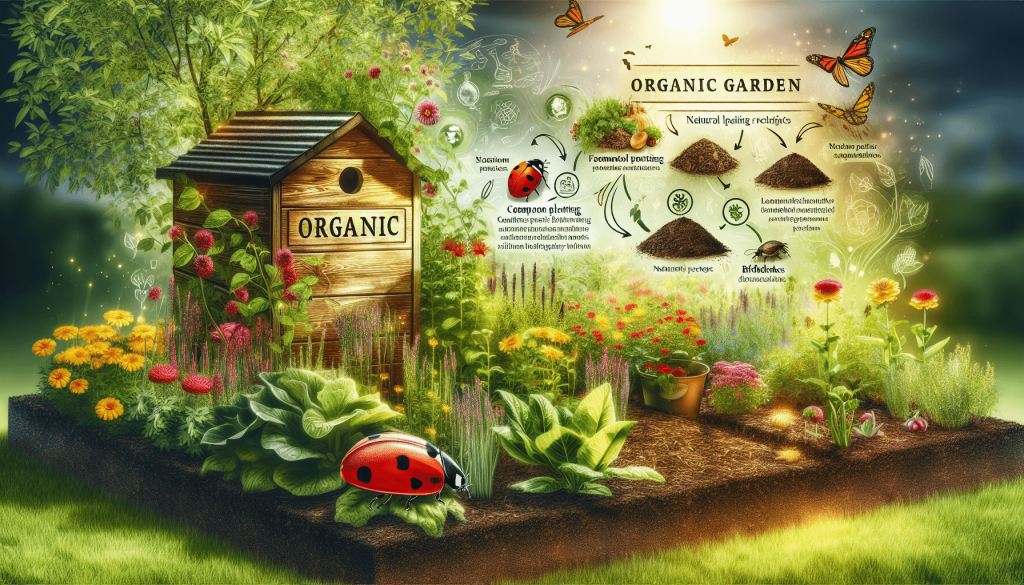
Companion Planting
Companion planting is a technique where different plants are grown together to provide mutual benefits. This practice has been used for centuries and has proven to be beneficial in organic gardening. One of the advantages of companion planting is the attraction of beneficial insects. Certain plants, such as marigolds, attract predatory insects that feed on common garden pests, reducing the need for chemical insecticides. By planting these companion plants alongside your main crops, you create a natural defense against pests.
In addition to pest control, companion planting can also enhance pollination. Some plants, like bee-friendly flowers, attract bees and other pollinators, which can improve fruit set and overall production. By incorporating these pollinator-friendly plants into your garden, you ensure that your crops receive adequate pollination, leading to better yields.
When practicing companion planting, it’s important to consider the compatibility of different plants. Some combinations may have negative effects, such as stunted growth or competition for resources. Therefore, it’s essential to research and choose companion plants wisely to maximize their benefits.
Watering Techniques
Watering is a crucial aspect of gardening, and using the right techniques can greatly benefit your plants. In organic gardening, it is recommended to provide deep, infrequent watering. This means watering your plants deeply, allowing the water to penetrate the soil and reach the roots. This promotes stronger root development and helps plants become more drought-tolerant. By watering deeply, you encourage your plants to search for moisture deeper in the soil, which can result in stronger and healthier plants.
Another important tip is to water your plants in the morning. Watering early allows the plants to absorb the moisture before the heat of the day evaporates it. This also helps to prevent fungal diseases, as the foliage has time to dry out before nighttime. By watering in the morning, you ensure that your plants are adequately hydrated and reduce the risk of disease.
To further conserve water and retain moisture in your garden, it is recommended to use mulch. Mulch acts as a protective layer, preventing water evaporation from the soil surface. It also helps to suppress weed growth, which can compete with your plants for water and nutrients. Organic mulches, such as straw or wood chips, are ideal for organic gardening as they break down over time and contribute to the overall fertility of the soil.
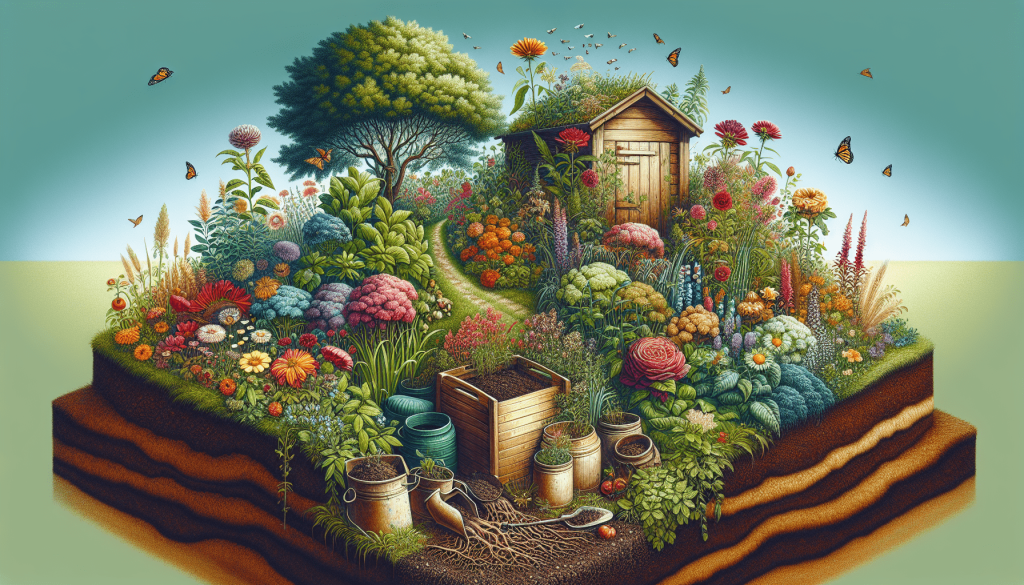
Weed Management
Weeds can be a persistent problem in any garden, but in organic gardening, it is important to manage them without the use of synthetic herbicides. Hand pulling weeds is a simple and effective method to remove them from your garden. This allows you to selectively remove unwanted plants while minimizing disturbance to your desired crops. Regular weeding sessions are essential to stay on top of weed growth and prevent them from competing with your plants for resources.
Another effective weed management technique is the use of mulch. Applying a layer of organic mulch around your plants can help suppress weed germination and growth. The mulch acts as a physical barrier, preventing sunlight from reaching weed seeds and hindering their growth. Additionally, as the mulch breaks down over time, it contributes nutrients to the soil and improves its fertility.
Avoiding chemical herbicides is crucial in organic gardening, as they can harm beneficial organisms in the soil and have long-lasting effects on the environment. By utilizing organic weed management techniques, you can keep your garden weed-free while promoting a healthy and sustainable ecosystem.
Pest Control
Pest control is an important aspect of organic gardening, and it is essential to manage pests in a way that is environmentally friendly and safe for your plants. One effective method is to encourage beneficial insects into your garden. Beneficial insects, such as ladybugs and lacewings, feed on common garden pests like aphids and caterpillars. You can attract these beneficial insects by planting companion plants, such as dill or calendula, which provide habitat and food for them. By creating a welcoming environment for beneficial insects, you can naturally control pest populations and reduce the need for chemical insecticides.
Organic insecticides can also be used as a means of pest control when necessary. These insecticides are derived from natural sources and pose minimal risk to the environment and beneficial organisms. Examples include insecticidal soaps or plant-based oils, which target specific pests without harming beneficial insects. It is important to use these organic insecticides sparingly and only when other pest control methods are insufficient.
Implementing physical barriers can also help protect your plants from pests. For example, row covers can be used to prevent insect infestations, while netting can keep birds and small animals away from your crops. By employing these physical barriers, you can create a protective barrier between your plants and potential pests.
Disease Prevention
Preventing diseases is essential in organic gardening to ensure the health and productivity of your plants. One effective way to prevent diseases is by choosing disease-resistant plant varieties. These varieties have been specifically bred to resist common diseases, reducing the risk of infection. When selecting seeds or transplants, look for varieties that are labeled as disease-resistant for the specific diseases prevalent in your region.
Practicing good garden hygiene is another important aspect of disease prevention. This includes removing and disposing of diseased plant material, such as infected leaves or fruits. Regularly inspect your plants for any signs of disease and take immediate action if detected. By removing affected plants or parts promptly, you prevent the spread of diseases to healthy plants.
Proper crop spacing and ventilation are also key factors in disease prevention. Overcrowded plants can create a humid and stagnant environment, promoting the growth of fungal diseases. Be sure to provide adequate spacing between your plants to allow for air circulation and sunlight penetration. This helps to keep the foliage dry and minimizes the risk of diseases taking hold in your garden.
Harvesting and Storage
Harvesting your crops at their peak ensures the best flavor and nutritional content. Different crops have different signs of readiness for harvest, so it’s essential to research the specific requirements for each variety you grow. Harvesting too early or too late can result in flavorless or overripe produce, so pay close attention to the right time to pick your crops.
Proper storage is also crucial to maintain the freshness and quality of your harvested produce. Some crops, like tomatoes and peppers, are best stored at room temperature, while others, like lettuce and spinach, require refrigeration. Be sure to store your produce in appropriate conditions to prolong its shelf life.
Avoiding post-harvest contamination is important in organic gardening. Properly wash your harvested produce before consuming or storing it to remove any dirt or pests. However, it’s essential to note that excessive washing can cause some fruits and vegetables to spoil quickly. Use gentle cleaning methods and ensure that produce is thoroughly dry before storing.
Seed Saving
Seed saving is a traditional practice that allows gardeners to preserve and share heirloom varieties while reducing reliance on commercial seed sources. To successfully save seeds, it is important to select open-pollinated varieties, as these will produce true-to-type offspring. Hybrid varieties do not produce stable offspring, so it’s best to avoid saving seeds from hybrid plants.
Isolation is another important factor in seed saving. Cross-pollinating plants, such as cucumbers and squash, can easily cross-pollinate with other varieties of the same species, resulting in seeds that are a mix of both parent plants. To prevent cross-pollination, it is necessary to separate different varieties by a significant distance or use physical barriers, such as cages or nets.
Properly drying and storing seeds is crucial to their viability. After harvesting, seeds should be thoroughly dried to prevent mold or rot. This can be done by air-drying the seeds in a well-ventilated area for several days. Once dry, store the seeds in a cool, dry place in tightly sealed containers to protect them from moisture and pests. Properly saved and stored seeds can be used for subsequent plantings, allowing you to maintain your favorite varieties over time.
Continuous Learning and Improving
The world of organic gardening is constantly evolving, and there are always new techniques and methods to explore. To stay updated on organic gardening best practices, it is important to engage in continuous learning. Keep up with the latest research, read gardening books and articles, and attend gardening workshops or classes. This will help you stay informed about new organic gardening techniques that can enhance your gardening experience.
Joining gardening communities is another fantastic way to learn and improve your organic gardening skills. Connect with fellow gardeners through local gardening clubs, online forums, or social media groups. These communities provide a platform to share experiences, exchange advice, and learn from each other’s successes and challenges. By joining a gardening community, you become a part of a supportive network of individuals who share your passion for organic gardening.
Lastly, don’t be afraid to experiment with new methods in your garden. Every garden is unique, and what works for one gardener may not work for another. Embrace the opportunity to try different techniques, varieties, or growing methods. By experimenting, you not only expand your knowledge but also discover what works best for your specific garden and personal gardening style.
In conclusion, organic gardening encompasses a holistic approach to growing plants that is safe, sustainable, and environmentally friendly. By following the best practices outlined above, you can create a thriving organic garden that is both productive and beneficial for the ecosystem. Remember to focus on soil preparation, implement crop rotation, practice companion planting, use proper watering techniques, manage weeds, control pests naturally, prevent diseases, harvest and store produce correctly, save seeds, and continuously learn and improve your organic gardening skills. With dedication, patience, and a little bit of experimentation, you can enjoy the rewards of a bountiful and healthy organic garden. Happy gardening!


